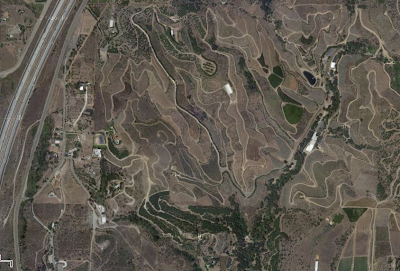Quite an inauguration after all! I wasn't expecting much, and the President's speech, like most of his recent speeches that I've heard, was a bit disappointing. It seemed like a laundry list of projects and promises, all of them worthy, of course, but loosely and not quite convincingly strung together. It seemed to be leading up to some grand climax which didn't materialize. But I was glad to hear climate change taken seriously, the strongest and most basic case for a welfare state, and of course the rising tide of inclusion encapsulated in the names "Seneca Falls, Selma and Stonewall"! And Obama's address was flanked by eloquent words by a Civil Rights Movement veteran invoking a "great cloud of witnesses," and a gay Hispanic poet's tender evocation of the everyday work, intimacies and decencies of America - all showing as they were telling that this land really is your land, this land is my land.
But I was most moved by the benediction by the Rev. Luis Leon, rector of St. John's Episcopal Church in DC. If you didn't catch it, here it is:
Let us pray:
Gracious and eternal God, as we conclude the second inauguration of President Obama, we ask for your blessings as we seek to become, in the words of Martin Luther King, citizens of a beloved community, loving you and loving our neighbors as ourselves.
We pray that you will bless us with your continued presence because without it, hatred and arrogance will infect our hearts. But with your blessing we know that we can break down the walls that separate us.
We pray for your blessing today because without it, distrust, prejudice and rancor will rule our hearts. But with the blessing of your presence, we know that we can renew the ties of mutual regard which can best form our civic life.
We pray for your blessing because without it suspicion, despair, and fear of those different from us will be our rule of life. But with your blessing, we can see each other created in your image, a unit of God’s grace, unprecedented, irrepeatable and irreplaceable.
We pray for your blessing because without it, we will see only what the eye can see. But with the blessing of your blessing we will see that we are created in your image, whether brown, black or white, male or female, first generation or immigrant American, or daughter of the American Revolution, gay or straight, rich or poor.
We pray for your blessing because without it, we will only see scarcity in the midst of abundance. But with your blessing we will recognize the abundance of the gifts of this good land with which you have endowed this nation.
We pray for your blessing. Bless all of us, privileged to be citizens and residents of this nation, with a spirit of gratitude and humility that we may become a blessing among the nations of this world. We pray that you will shower with your life-giving spirit, the elected leaders of this land, especially Barack our president and Joe our vice president. Fill them with a love of truth and righteousness, that they may serve this nation ably and be glad to do your will. Endow their hearts with wisdom and forbearance, so that peace may prevail with righteousness, justice with order, so that men and women throughout this nation can find with one another the fulfillment of our humanity.
We pray that the president, vice president and all in political authority will remember the words of the prophet Micah, “What does the Lord require of you but to do justice, to love kindness and always walk humbly with God?”
[Gives a brief prayer in Spanish]
Mr. President, Mr. Vice President, may God bless you all your days. All this we pray, in your most holy name, amen.
Beautiful, and serious. Religion, and the religion of America, at its best.
 art centers - in quest of curricular tie-ins and ideas for a conference devoted to his work in the Fall. I'm also one of the intrepid few who took up the offer to sleep over in the Dorchester Projects. Yellow submarine, the arctic sleeping bag I bought for the Beatles-themed hostel in Darjeeling last January, is looking forward to a nice workout!
art centers - in quest of curricular tie-ins and ideas for a conference devoted to his work in the Fall. I'm also one of the intrepid few who took up the offer to sleep over in the Dorchester Projects. Yellow submarine, the arctic sleeping bag I bought for the Beatles-themed hostel in Darjeeling last January, is looking forward to a nice workout! art centers - in quest of curricular tie-ins and ideas for a conference devoted to his work in the Fall. I'm also one of the intrepid few who took up the offer to sleep over in the Dorchester Projects. Yellow submarine, the arctic sleeping bag I bought for the Beatles-themed hostel in Darjeeling last January, is looking forward to a nice workout!
art centers - in quest of curricular tie-ins and ideas for a conference devoted to his work in the Fall. I'm also one of the intrepid few who took up the offer to sleep over in the Dorchester Projects. Yellow submarine, the arctic sleeping bag I bought for the Beatles-themed hostel in Darjeeling last January, is looking forward to a nice workout!




















































